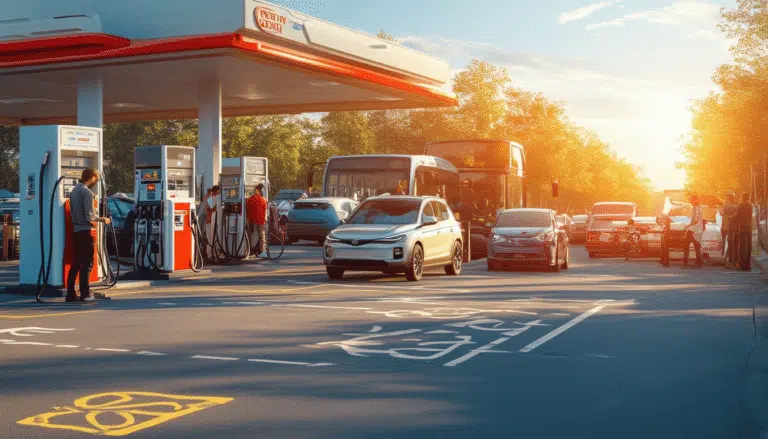How energy efficiency incentives work
Energy efficiency has become a crucial topic in the pursuit of a sustainable future. To promote its adoption, many governments have implemented incentives that facilitate the acquisition of technologies and equipment that consume less energy. These incentives can include tax deductions, subsidies, and preferential financing, aimed at both households and businesses. Through these measures, the goal is not only to reduce energy consumption but also to educate citizens about the importance of making investments that contribute to energy savings and environmental sustainability.
Incentives for energy efficiency are measures implemented by governments and various institutions to promote the use of technologies and practices that save energy. These initiatives are designed to reduce energy consumption, lower costs for consumers, and mitigate environmental impact. This article will explore how these incentives work, the different types that exist, and how they can benefit households and businesses.
Types of available incentives
There are multiple types of incentives that governments can adopt to encourage energy efficiency. These may include subsidies, tax credits, and discounts on the purchase of energy-efficient products and services.
Government subsidies
Subsidies are direct payments granted to individuals or businesses to reduce the cost of investing in efficient technologies. These can be directed toward the purchase of energy-efficient appliances, solar energy systems, among others. Often, subsidies are designed to make efficiency technologies more accessible to the general public.
Tax credits
Tax credits allow taxpayers to deduct part of the cost of energy upgrades from their taxes. This not only reduces the initial investment cost but also provides a long-term financial incentive to adopt more efficient practices.
Discounts and financing
Additionally, some states offer discounts on the purchase of energy-efficient products. Although sometimes they do not meet the exact definition of a discount, they can be classified as price adjustments that benefit consumers. There are also financing programs that allow users to access low-interest loans to implement energy upgrades in their homes or businesses.
Benefits of energy efficiency incentives
Energy efficiency incentives offer numerous benefits to both consumers and the environment. Economically, they help to reduce the operating costs of homes and businesses. Additionally, by decreasing energy demand, they contribute to the stability of the electrical grid and can help prevent power outages.
How to participate in incentive programs
To benefit from these programs, it is essential to be well-informed about the initiatives in place in each region. Often, information about available incentive programs can be found on government websites or through non-governmental organizations that promote energy efficiency.
Examples of home applications
Homes can benefit from a variety of incentives by adopting efficient technologies. For example, installing high-performance heating and cooling systems, using LED light bulbs, and upgrading old appliances are practices that may be covered by tax credits or subsidies.
Brief conclusion on the impact
The impact of energy efficiency is not only measured in terms of economic savings but also in its contribution to a more sustainable future. As more individuals and businesses participate in these programs, sustainability will be favored, and significant changes in reducing carbon emissions will occur.
To delve deeper into the topic, additional resources can be explored, such as investments in sustainable infrastructure or accessing strategies for reducing fuel expenditure. You can also consult practical recommendations on minimizing invisible costs in hydrogen production and optimizing fuel consumption in fleets.
Incentives for energy efficiency are key tools that promote the adoption of technologies and practices that reduce energy consumption. These incentives can take various forms, including grants, tax credits, and discounts, aimed at facilitating the acquisition of equipment and improvements that generate a more efficient use of energy resources. Through public policies, governments tend to design programs that encourage investment in low-consumption systems and technologies, such as LED light bulbs and efficient appliances.
A crucial aspect of how these incentives work is their ability to reduce initial costs that consumers and businesses face when investing in sustainable solutions. For example, tax credits allow homeowners to deduct part of the cost of energy efficiency improvements from their tax bill, making these upgrades more accessible. On the other hand, subsidies can provide direct financing for renovation and construction projects that meet specific efficiency standards.
Moreover, education and awareness are fundamental elements for the success of the incentives. Consumers need to be informed about the available options and how they can benefit from them. Energy labels play an important role in informing buyers about the energy performance of products, helping them make informed decisions that contribute not only to their personal savings but also to reducing environmental impact.
In summary, energy efficiency incentives work through a well-designed policy framework that incorporates subsidies and tax benefits, supported by educational initiatives that guide consumers towards more sustainable practices. This comprehensive approach is essential for achieving widespread adoption of technologies that contribute to energy savings and environmental protection.






